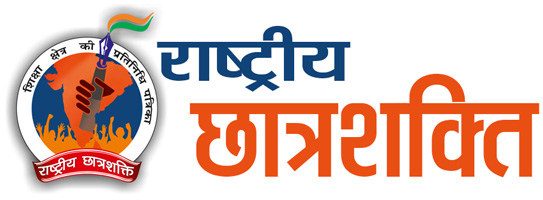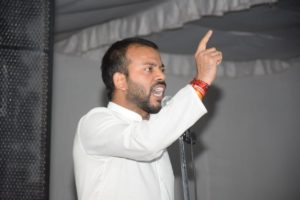India, that is Bharat, has always been known as a land that celebrates diversity, an attribute which continued and solidified after the Indian Constitution came into being. Bharat also witnessed some unfortunate episodes, particularly the “minority” problem, which very much influenced and colored the political life of the country. Since independence, numerous attempts have been made by ideologically motivated people to construct a reality that shows the Indian state as a Brahmanical state, inclined to rule and suppress the underprivileged “minorities”. Such artificial schism was pushed in school and universities curriculum to recreate the partition of the country and to represent, in particular, the tribal communities at the receiving end of “ruling Brahmanical elites”. Such reprehensible agendas have tainted the reality and have concealed numerous contributions and sacrifices of tribal communities in our nation-building. Given the propaganda around tribal issues and misinformation on the remedies available to them, it is worth shedding some light on such laws. The laws debunk the misinformation that the Indian state uses an iron fist to rule over tribal, and provides them with no legal protection.
Firstly, a wide range of tribal rights is covered by the provisions relating to the Fundamental Rights. Many of these articles protect them from hostile and discriminatory State action. But, it nowhere means that states are discriminatory and hence such rights. The existence of such rights in the Indian constitution acts as a shield for such communities and come what may, can’t be removed. Besides the Fundamental Rights, certain Directive Principles oblige the state to ensure the welfare of such communities. To clarify, such rights are available to the scheduled tribes, the tribes that are notified by the President of India. Furthermore, under Article 330, seats are to be reserved for the Scheduled Tribes in Lok Sabha. The Indian Parliament has also enacted the Scheduled Caste and the Scheduled Tribes (Prevention of Atrocities) Act, 1989.
The policymakers have deeply thought that it may be harmful to the tribal people if they are brought into indiscriminate contact with the outside world to preserve their distinct way of living. This is also to stop people from a developed area to move and exploit tribal lands. Laws have therefore been enacted prohibiting the entry of non-tribal into the tribal areas without permits, living of non-tribals permanently in tribal areas, and transfer of tribal lands to non-tribal people. Then there is a National Commission for Scheduled Tribes that investigate and monitor all matters relating to the safeguards provided for the Scheduled Tribes under the constitution. The constitution also provides for the appointment of a Minister for Tribal Welfare in states. There are special provisions made for the administration of the areas known as the Scheduled Areas.
In the year 1999, the Ministry of Tribal Affairs was established under the Government of India after the bifurcation of the Ministry of Social Justice and Empowerment with the objective of a focused approach towards the integrated socio-economic development of the Scheduled Tribes. The Ministry of Tribal Affairs is the Nodal Ministry for overall policy planning and coordination of programs for the development of STs. Anyone with a curious mind is a click away from the Ministry website and another click away to gauge the rules and regulations concerning the Tribal communities in India. Following are the Acts/Rules concerning the Scheduled Tribes:
Forest Rights Act 2006 [with Rules (Including 2012 Amendment) and Guidelines]
Protection of Civil Rights Act, 1955
Protection of Civil Right Rules, 1977
The Scheduled Castes and Scheduled Tribes (Prevention of Atrocities) Rules, 1995 and it is amended
The Scheduled Castes and Scheduled Tribes (Prevention of Atrocities) Act, 1989 — No. 33 of 1989 (As amended)
The Scheduled Castes and Scheduled Tribes (Prevention of Atrocities) Act, 1989 — No. 33 of 1989 (As amended)
SC/ST (Prevention of Atrocities) Act, 1989
SC/ST (Prevention of Atrocities) Rules, 1995
Panchayats Extension to the Scheduled Areas (PESA) Act 1996
The website of the Ministry is akin to an encyclopedia for any information on the Tribal communities of India. Despite the humongous corpus of material available on the Tribal communities, there are unending propagandist literature masquerading as an academic study with malign intention to peddle lies. Also, there are government-sponsored fellowships dedicated to the students belonging to the scheduled tribes. Accusing the Indian state of suppressing tribal while the same state encourages the community is beyond comprehension. The Indian Constitution is a repository of rights and remedies for the tribal community, which has facilitated the mainstreaming of many individuals from the community. The ideologically stagnant left-liberals sitting in academia have spent years peddling their constructed myth of haves and have-nots. They conveniently overlooked the Indian Constitution and other statutes, because that’s what serve their parochial purpose of creating and sustaining deep fissures within Bharat. They have forgotten the resilience of our civilization and how it survived and prospered in the face of numerous attempts to transform it into a monolithic society.
References:
Ministry of Tribal Affairs
M.P Jain. “Indian Constitutional Law”, 6th Edition
(Author is M.Phil Student SIS Student)







